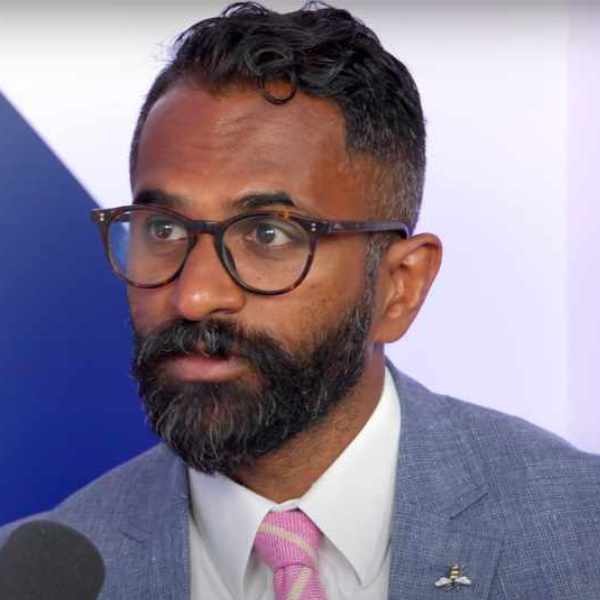Siva Anandaciva is the Chief Analyst at the King’s Fund; a leading health and care think tank in the UK. Renowned for his expertise in health policy research, Siva provides valuable insights into healthcare challenges and solutions. His work contributes to informed decision-making and policy development, reflecting a commitment to enhancing the quality and efficiency of healthcare delivery.
Introduction
Hello, I am Siva Anandaciva, Chief Analyst at the King’s Fund. In this special episode of Voices of Care, Suhail Mirza and I discussed the critical issues within the health and social care sector. One poignant aspect of our conversation that stands out is the perilous state of the physical infrastructure within the NHS estate and the profound consequences it bears on patient care.
Recent reports from the Institute for Government and NHS Confederation have highlighted the importance of investing in NHS buildings and equipment, to facilitate increased productivity and quicker and higher-quality patient care. I believe that for the NHS to keep pace with demands for health care, there is a need for greater funding and capital investment, not only to improve the infrastructure of the NHS estate, but also to create higher standards of care for patients across the country.
The King’s Fund’s Mission
Suhail opened the conversation by asking about The King’s Fund’s work, positioning it as a think tank focused on researching health and care policy in the UK. I emphasised our commitment to leadership development and improving health outcomes, particularly for those with the worst health conditions. Our multifaceted approach spans research, policy, and leadership development, reflecting a comprehensive strategy for addressing healthcare challenges.
The Stark Reality of NHS Infrastructure
Our conversation took a crucial turn as we spoke about the pressing issue of NHS infrastructure. I painted a stark picture, emphasising that the decisions we make today about hospital buildings and facilities are legacy choices that will impact patient care for decades. I shared a sobering example of a hospital grappling with broken gutters, allowing rainwater to seep through the walls during nursing handovers, adding an unexpected hazard to the routine.
Legacy Decisions and Patient Care
I also highlighted the significance of long-term planning in infrastructure investments. I challenged the prevailing norm where successive governments announce new hospital building programs, highlighting the need for ongoing, strategic investments to avoid the cyclical pattern of underinvestment and crisis.
Patient Care at Risk
The dangerous state of NHS infrastructure, as vividly described, directly translates into compromised patient care. Dilapidated facilities, faulty equipment, and inadequate conditions create an environment where healthcare professionals are forced to work under challenging circumstances. This not only affects the well-being of the staff but also jeopardises patient safety.
The Funding Conundrum
We turned our attention to the critical issue of funding. I broke down the numbers, revealing that historical funding increases of 4% per year had been reduced to 1-2% annually for much of the past ten years. The consequences are profound, leading to insufficient income for the system to cope with rising demands. I underscored the need for increased funding if the NHS is to realise the government’s ambitions to tackle care backlogs.
Efficiency and Productivity
Dispelling misconceptions about NHS efficiency, I emphasised that while the raw data supports the system’s productivity, public dissatisfaction often stems from firsthand experiences. I suggested that although improvements can be made, the NHS is not inherently inefficient and does not require radical reform to how it is funded.
International Comparisons
The conversation widened its scope to international comparisons of health spending. I noted that the UK’s spending per person is below average when compared to countries like Germany and France. I challenged the notion that average spending can lead to outstanding outcomes even in the most efficient health care systems, emphasising the need for increased investment to match ambitious healthcare goals.
A Call for Urgent Action
My urgency echoed the need for immediate action. I urged policymakers and stakeholders to recognise the tangible impact of neglected infrastructure on patient care. The pressing call was for sustained, long-term commitments to ensure that the physical foundation of the NHS aligns with the exacting standards of care expected by both healthcare professionals and the public.
Concluding Thoughts
The NHS has been facing a significant issue with the poor condition of its buildings and equipment, with the cost of tackling these issues having more than doubled from £4 billion in 2011/12 to over £10 billion in 2021/22. Nearly one-fifth of the repair bill is now for equipment and buildings in such a poor state that present potentially catastrophic risks to patient care.
To counter the crisis within the NHS, the only solution is to spend more money and time on the upkeep and development of healthcare facilities and equipment. The stark reality of crumbling buildings and compromised facilities demands urgent attention and sustained investments to secure a brighter, safer future for patient care in the UK’s health and social care sector.








